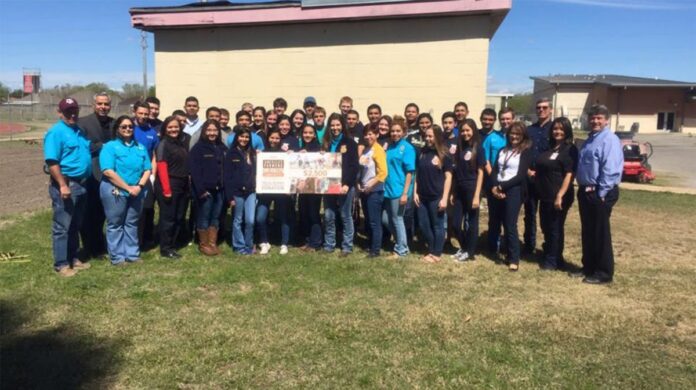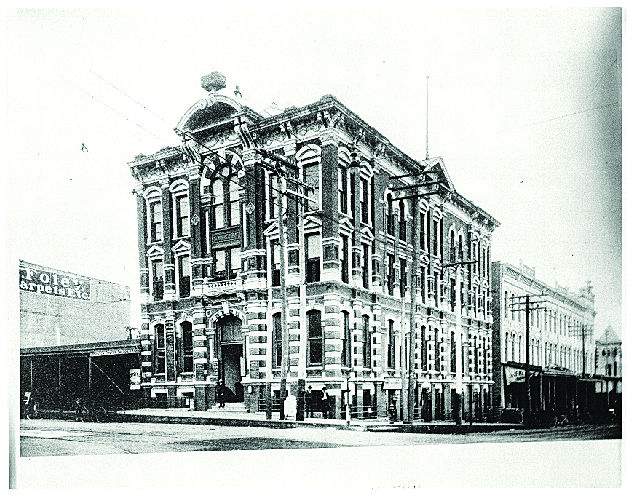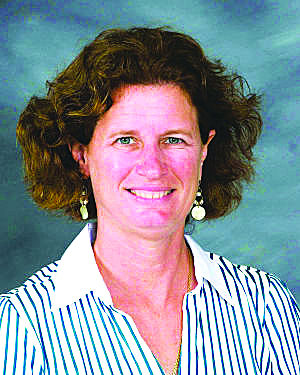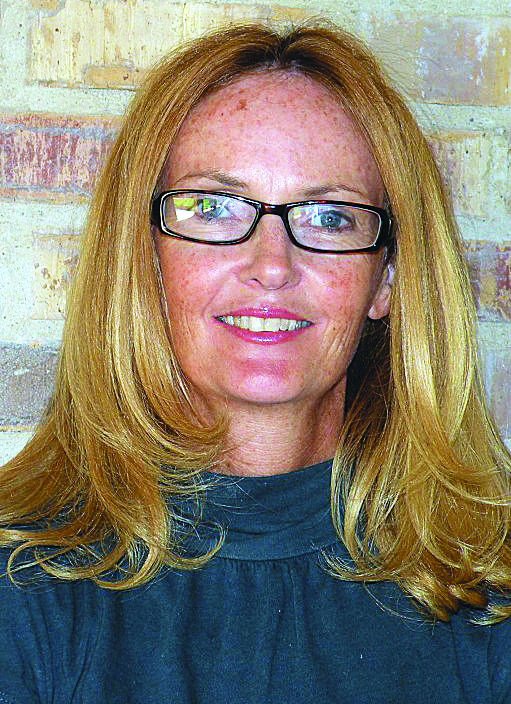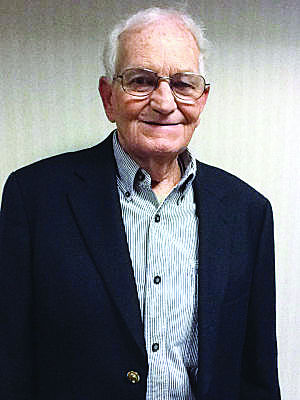BY NORMAN ROZEFF
EDITOR’S NOTE: This is the next installment in an ongoing series on San Benito’s Sam Robertson. Find other articles in the series at www.valleystar.com
J. Scott Brown (a former San Benito mayor) reminisced in a Corpus Christi Caller article, 7/24/71:
“Mr. Sam noted that the land adjoining the resacas sloped away from the Rio Grande River, especially the Los Fresnos Resaca. He found that the land, as a rule, sloped from the river about one foot to the mile, an ideal setup for gravity irrigation distribution. He optioned Landrum land, the Hicks land and the Combes tract. He secured the Austin law firm of Gregory, Batts, Brooks, and Sam Spears.
“Later Judge Spears came to make his home in San Benito, on one of the beautiful resacas. They organized the San Benito Land and Water Company, the Heywood Conner Bank and, shortly thereafter, the drainage district. They acquired options on adjacent tracts and organized the San Benito Rio Grande Valley Railroad Company, originally running from Sugarland [Author’s Note: an area several miles north of Rio Hondo] to Santa Maria, this covering their holdings.
“One undertaking called for another. Next in line they built the sugar mill which is now the C. P. & L. plant. After repeated tries, it was found that the cane was too low in sugar content to make it profitable in this part of the county. These undertakings are cited just to name a few around the San Benito area developed under the leadership of Mr. Sam.”
By early November 1910 the Interurban railroad was already three miles north of San Benito as it progressed toward Rio Hondo [Note: The current spelling of this town, Rio Hondo, did go into effect until 8/15/25 when First Assistant Postmaster General John H. Bartlett in Washington requested the change].
A 12-mile spur of the Interurban from San Benito to south of Mercedes was about to begin its construction. The railroad was to reach Rio Hondo on 6/7/11. Growers were told of potential savings. Whereas cane growers had paid an average $1.15/ton to haul seed by wagon four miles and $1.50 for five, the railroad was projected to haul cane for 30 cents/ton or less.
This same month Sam Robertson had contracted with W. H. Morrison and Company to erect an ice plant of 40 ton/day capacity.
It was needed to ice the 4,200 acres of cabbage being grown in the area and the 1000 acres of tomatoes.
It opened the second week of April 1911, and its production would allow vegetable growers a greater shipping range.
Field labor was in short supply in the late spring of 1911. The San Benito Sugar Manufacturing Company actively sought workers. T. E. Satterfield was able to secure 150 men to work the company’s 800 acres of cane and 1,200 of cotton. A feather in San Benito’s cap and a generator of favorable news was its production of the first bale of cotton in the U.S. on June 11, 1911.
Producer Ernest Matz broke the Texas record by 10 days. The bale was rushed to the Houston Cotton Exchange and sold to New York buyer Jesse Jones for $1,015 — an unheard of price, breaking all world records. Matz also received an additional $125 bonus from Gohlman, Lester and Co. Matz was reported to have produced 60 bales on 40 acres in 1910.
At this point it is noted that newspaper articles now set the mill’s worth at $250,000. This and other mills were often mentioned with ever-changing dollar values and cost figures. Part of this was due to hype and part to changing financial contingencies. Also to be recognized is the great fanfare accompanying the announcements of future mill establishments and conversely the absence of mention when such plans failed to come to fruition. In any event with construction having begun in April 1911, the sugar company, capitalized at only $150,000 with the first payment for stock due 2/11, held an election of officers. S. C. Cowgill was elected president, Robertson, 1st vice-president and general manager, Charles E. Barber, 2nd vice-president and secretary, and W. B. Hinkley, treasurer.
With portions of the mill machinery on site, a 35 man force began pouring concrete by the first week in May. A month later David M. Duller of Engineering and Specialty Co., Houston was in town for the erection of the large concrete smoke stack, which already had a seven foot above-ground foundation laid. The stack was scheduled to rise five and a half feet per day. A second carload of machinery arrived July 8 as the giant chimney stood at 110 feet with only 30 feet more to go.
Shortly thereafter Col. Heywood sold 15,000 acres of his Espiritu Santo Irrigated Land Company, Los Indios land, and some Landrum acreage to A.C. Swanson and Company and its partner Allison Richey Land Company for $125/ acre. On his farm 4 ½ miles south of San Benito, Heywood would plant 1000 acres of sugarcane. Unbeknown to him the Harlingen clay soil series in this location was underlain by very poorly drained subsoil. As a result the subsurface salts began to rise over time, and his cane yields plummeted to the point of abandonment.
By 8/16 the smokestack was completed. Day and night work began on the main building — a handsome structure still standing and in use at the CPL Las Palmas plant in the center of San Benito. Two hundred lights were strung to facilitate the night work. Three more railroad cars with mill components were due to arrive shortly at Galveston on the Mallory Shipping Line.
Charles L. Wagner arrived on scene from Puerto Rico in September. He was hired by the company to grow cane. He planned to establish an experiment farm and issue regular bulletins giving cane farmers advice. His wife, who was in Massachusetts, was scheduled to join him in December.
The anticipated start date for the mill was 12/1/11, but by 12/16/11 it was still not ready. Its first run at 1,200 ton/day was pushed back to January though designer Delbert was given praise for his 25 years of experience. When additional installation problems ensued, the decision was made not to try to operate the mill in the 1911-12 season.
In May 1912 a short newspaper article stated that W(alter).C. Shaw had purchased the San Benito mill which had not been completed in time for the 1911-12 crop. [Shaw’s name during this period frequently crops up in newspaper accounts. He is not a capitalist himself but simply the Valley front man for outside syndicates.] No details were to follow. However it was noted that the machinery in the mill mirrored that of the Ohio and Texas factory except the San Benito one had curtain walls on steel framing and had belt-driven centrifuges rather than electric ones. This sale was never consummated because the buyer defaulted on later notes.
Shaw’s syndicate had paid $350,000 for the mill and 158.81 acres, but it soon learned that there were equipment suppliers wanting their money.
The mill began operating November 18,1912. It was still going nearly two months later as extrapolated from a 1/13/13 account headlined “Quarrel Over Sugar Cane, One Negro Seriously Stabbed, and One in Jail.” It went on to recount that Will Harris, a negro (sic) brakeman of the San Benito Railway was receiving medical attention in Brownsville after suffering two stab wounds, one in the back in the right lung and one in the left lung. He had been engaged in an argument with Paul Canton, another negro brakeman who was arrested by the city marshal of San Benito. They were contending over a piece of cane. C. L. Wagner was the mill’s manager at the time.
In April 1913 the Texas Department of State issued a permit to the Southern Irrigation and Sugar Company of Portland, Maine to do business in Texas. It would be capitalized with $2 million stock. W. C. Shaw was listed as its Texas agent. Several weeks later the San Benito Sugar Manufacturing Company filed suit in the 53rd District court against W. C. Shaw of Cameron County, F. Augustus Heinz of New York, the Southern Sugar and Irrigation Company, and others for notes aggregating $175,000. These notes were executed in payment of land sold to the defendants by the plaintiff.
The petition also asked for the appointment of a receiver to take charge of the mill and property of the irrigation and sugar companies.
In June a judge found no case for appointing a receiver or granting an injunction. An original case for $300,000 was still pending adjudication. In July 1913 additional indications that the company was in trouble came when a court order was issued to auction 64.81 acres in order to repay August Ehrhardt a $5,000 promissory note carrying 8% interest.
The SBL&W Co. itself went into receivership the following month. The receivers of this “entirely friendly action” were Fred Emmert of St. Louis and Sam Robertson, president of the company. Assets many times higher than the liabilities were claimed. “A series of unfortunate circumstances over which no one connected with the company had any control, which plan was decided upon after due consideration by all interested parties” described the receivership.
The crux of the problem was attributed to a crippling accident to the large pump at the river plant. A 36 inch pump was on hand and about to be installed, but completion would take 15 days.

